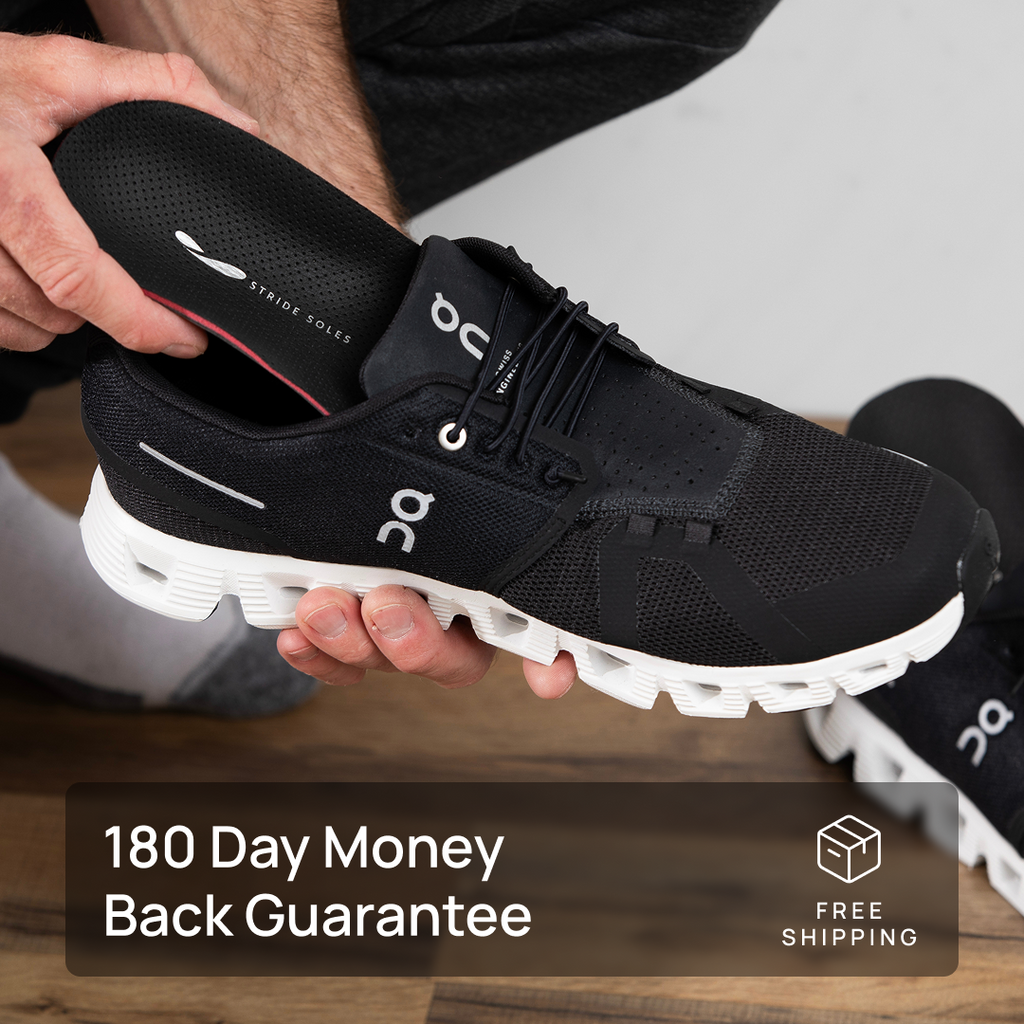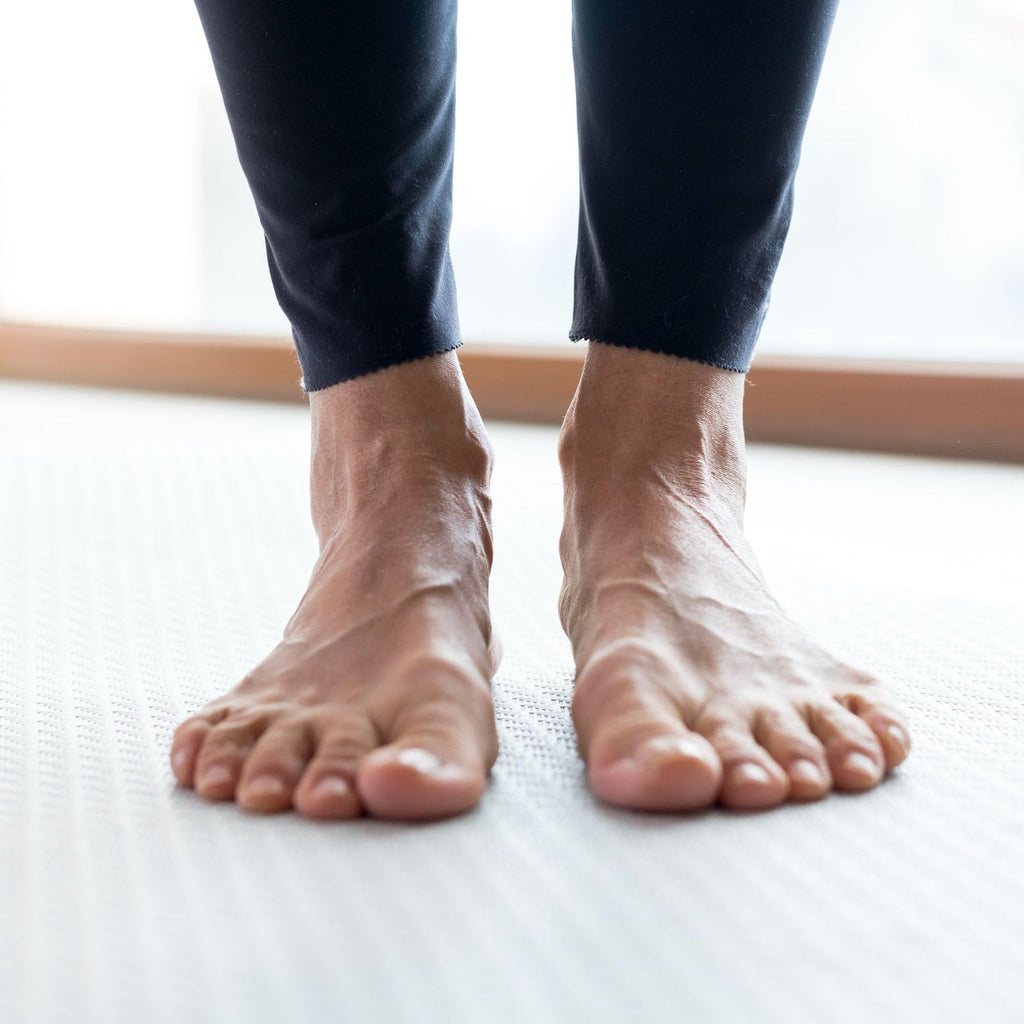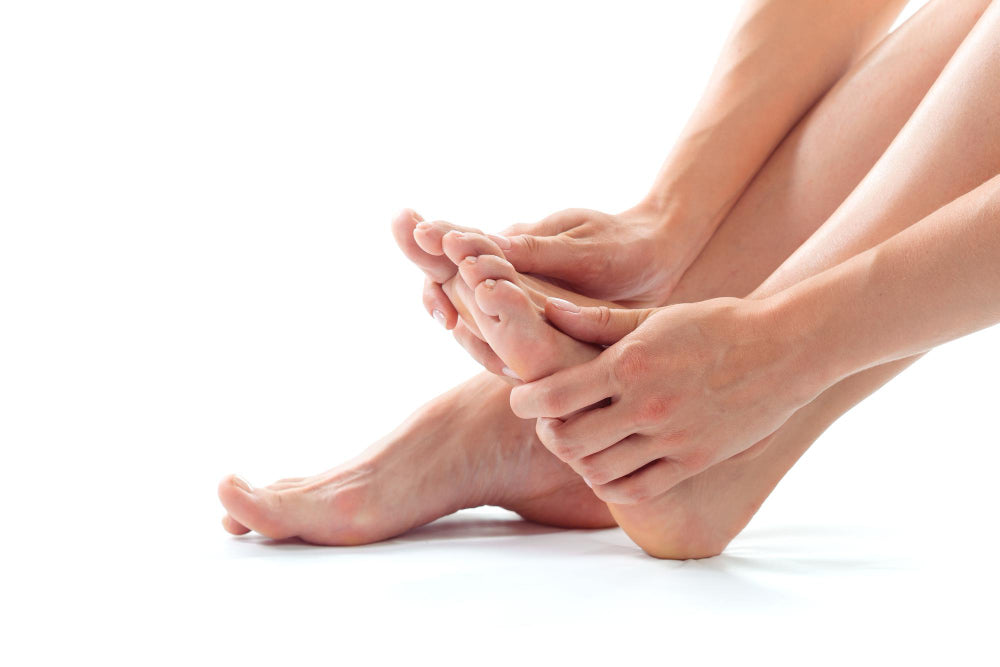Insoles for Flat Feet
In this article we look at what flat feet is, help you determine if you have flat feet, and then give a recommendation for the best insole for flat feet. Let's dive into it!
Do I have Flat Feet?
Before getting a pair of insoles for flat feet, it’s important to determine if you have flat feet to begin with. Flat feet means that you do not have standard arches as the foot is essentially one straight line from the heel to the toes. From a technical standpoint, you would expect a normal person to have a medial arch angle of about 130-150 degrees, with flat feet being above 150 degrees.
We can see above that as the angle is bigger you have flatter feet.
However, you don’t need a medical degree to determine if you have flat feet. All you need is a white piece of printer paper.
- Put the piece of paper on the ground. If you don’t have a piece of printer paper, any paper will do, even a envelope as long as it won’t move around when you walk over it.
- Wet the bottom of your foot with water. You may need to stick your foot in a bucket, or just run the shower over your foot until the bottom is wet.
- Walk over the piece of paper. Before you do this, make sure the foot is still wet, but not dripping. Additionally, walk normally over the piece of paper. Do not hold your foot while over the paper, just give a normal step.
From here you can see what your foot shape is when walking.
1: You see the full foot. If the entire foot is showing, especially the arch area, you have flat feet. This is because the arch is not raised during gait and thus pressed against the water.
2: You see some of the arch. This is a normal foot. Regular arches are going to collapse to some degree but will retain some of their rigidity
3: You see little to no arch. On the other end of the spectrum, if you see no arch, or little, you have high arches. This creates its own set of problems because their is going to be high pressure on the heel and ball-of-foot area as it’s the only place that touches the ground. Additionally, you will lose stability and potentially underpronate as well.
Once you have determined you have flat feet, you need to determine what to do about it!
How Does Arch Support Help With Flat Feet?
An arch works by acting like a shock absorber. As the foot hits the ground, a normal arch takes the pressure off the top and back of the foot and collapses slightly under pressure. Think of it like a arched bridge. The bridge distributes weight away from the center and absorbs pressure. The arch is a smartly shaped structure, which utilizes pressure, not tension.
Without an arch their is no redistribution of weight or shock absorber, all the pressure is just placed on the center of the foot, which can be painful and leads to fatigue and a risk of injury.
Additionally, a flat foot foot is likely to overpronate as there isn’t any structure to prevent the foot from excessively rolling inwards. Make no mistake, some pronation is normal, as it serves to make it so there isn’t one single area taking the full body’s pressure at one time. It’s when it’s excessive and breaks the normal kinetic chain that it is cause for concern.
With arch support the insole acts as an artificial arch for the foot. It compresses like a normal arch should, helping to distribute the weight across the foot and prevent overpronation. Every orthotic has a built in Medial arch, which has the cushioning effect of the body.
What makes great insole for flat feet
Moderately Rigid Support
It’s not enough for the insole to have the shape of an arch. If it’s flimsy the support will just completely collapse under pressure and not provide any of the needed stiffness.
On the other hand, if an orthotic is completely rigid with no give, the foot can become overly reliant on it. Think of it like a cast… your body is no longer doing any of the work and relies completely on the orthotic for support.
High Cushioning
Having a sizable cushion is really vital for someone with flat feet because they don’t have this ability to cushion themselves naturally. For this reason we recommend someone stay away from overly hard orthotics which might cause more harm than good.
Customization
Every foot is different and reacts differently under pressure. In fact, even a left foot is quite different from a right foot. Having a custom arch height in your insole is essential to making sure your insole feels comfortable and helps prevent overpronation. Have too high an arch in your insole and it will cause immense pain as the orthotic digs into your foot. On the other hand, if there isn’t enough of an arch in your insole, the orthotic won’t add any support.
Unique to your footwear
Sneakers, work boots, ice skates, skis, they all have different volumes and heel lifts. As such, the insole needs to be paired to the shoe type it’s going into. Don’t pair the two and you could face a situation where the insole doesn’t fit in your intended shoe. Remember, a good insole is only as effective as it is used. If the insole isn’t made special for that shoe, there is a good chance you won’t wear them!
Full Length
Many insoles simply stop at the ball of the foot. This creates issues for the patient as half of the gait consists of a push off around the toe areas. A top insole will have a met pad or bevel to distribute the weight across the toes, preventing common conditions like metatarsalgia or calluses. It can also allow for dorsiflexion of the toes in that late gait period, giving you a strong base and spring to push off of as you go forward.
Best Insole For Flat Feet: Stride Soles Custom Orthotic Insoles

Product Specifications:
- Top Layer: Perforated Vegan Leather
- Mid Layer: EVA Foam
- Bottom Layer: Lattice Shapped TPU
- Total Weight: 3.2 Grams
- Heel Cup: 18mm
- Arch Height: Custom
- Length/Width: Custom
- Return Policy: 180 days
Why we like it
Stride Soles is possibly the most custom insert on the market today. Everything is built exactly for you based on 3D scans you take of your feet. This allows the width/height of the orthotic to fit perfectly in your shoe, and the insole arch area to 100% match where it is on your feet. The result is an orthotic you won’t want to take out of your shoes!
Materials
Stride uses their patented lattice technology made up of military grade TPU. TPU holds up extremely well over stress, and is not surprising that their orthotics last for 5+ years. The lattice design has small holes in them, allowing for ventilation and breathability.
The top layer is made up of a vegan synthetic leather which is naturally moisture resistant and helps prevent the buildup or bacteria. While other insoles cut corners by just having 2 layers, Stride goes above and beyond to create the premium orthotic. It can also easily be washed and used again!

Clinically Designed
Every Stride flat feet orthotic is hand designed in Germany by master Pedorthists with years making insoles. They have seen all conditions, and know exactly what to add or subtract from an orthotic to optimize it for your condition. When an order comes into their factory, they leverage all your available data, from your gait, foot shape, and questionnaire. If they have any other design questions, the clinics will reach out to you directly.
Conclusion
If you are looking for a new insole for your flat feet, Stride Soles is a great option. With a 180 day return policy, there is really no downside to trying it out!




